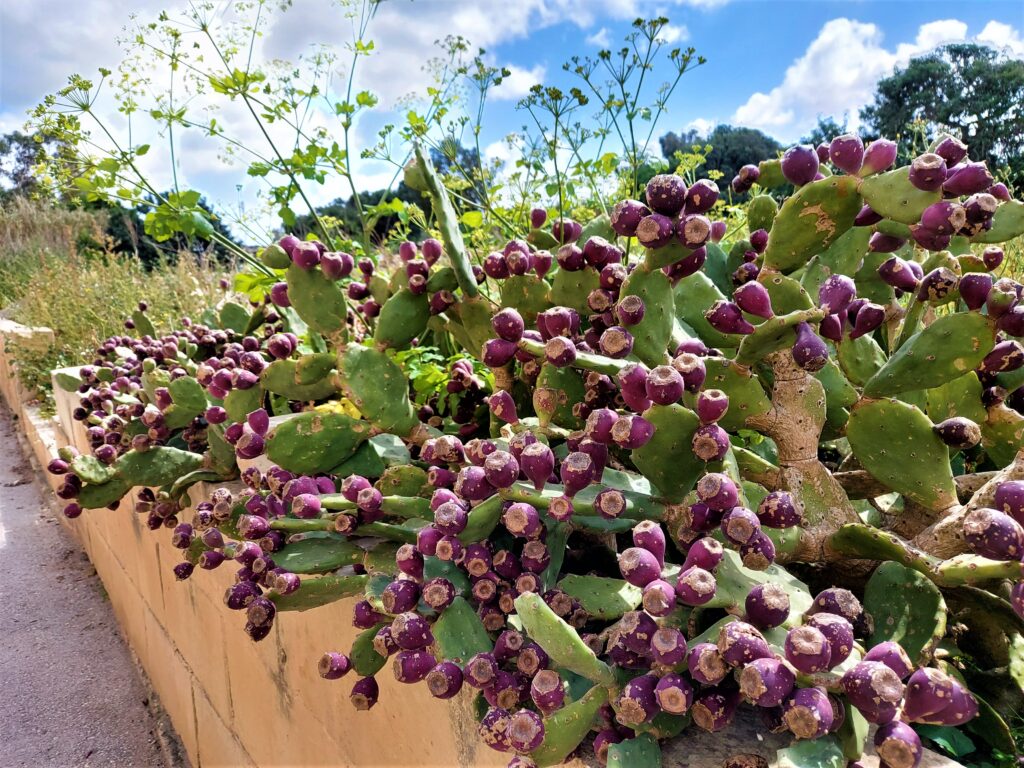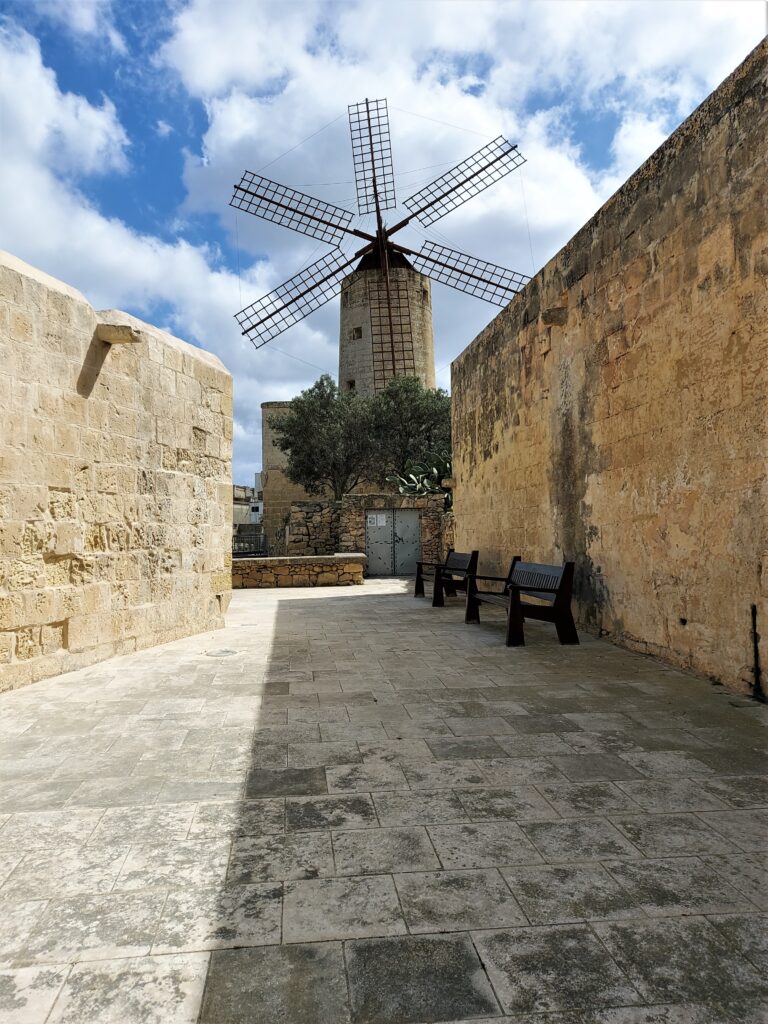The windmill in the area known as ix-Xarolla is from the time of Grandmaster Antonio Manoel de Vilhena in the early 18th century. It is one of four windmills in the village. The oldest is that built almost 50 years before in Nigret, Żurrieq during the reign of Grandmaster Cottoner. Grandmaster Vilhena rebuilt another windmill in Nigret, known as ta’ Marmarà. Another windmill in Żurrieq is known as tas-Salib. The Xarolla windmill is in an area rich in archaeological remains including Punic tombs and further in the direction of Safi, remnants of a Roman Wall.

We proceed on our walk behind the Windmill on Triq Sant Andrija in the direction of Ħal Far. Some 100 metres up the road we encounter the church of St. Agatha. Although built in the 16th century, this church fell into disrepair and was deconsecrated by Bishop Belanguer in the 17th century, only to be rebuilt and enlarged about a 100 years later. During World War II it served the spiritual needs of British servicemen serving in the area.

From the church of St. Agatha we continue along Triq Ħal Far in the direction of Ħal Far, taking the first turning on the left on a country road that leads us to Misrah Ħlantun. Continuing straight on the same road, we reach Clearwell Cottage and turn right, proceeding to Triq Ħal Far and walking adjacent to the airport apron/runway perimeter fence, past the Church of Our Lady of Loreto on the other side of Triq Ħal Far, always in the direction of the airport.
As we approach the long-stay airport car park, we encounter a pedestrian crossing that takes us across the road in the direction of the village of Gudja. As soon as we cross the main thoroughfare (Triq Ħal Far) at the pedestrian crossing, we head into Triq De Warsbergh and turn left in Triq Bir Miftuħ towards the Church of Bir Miftuħ.
